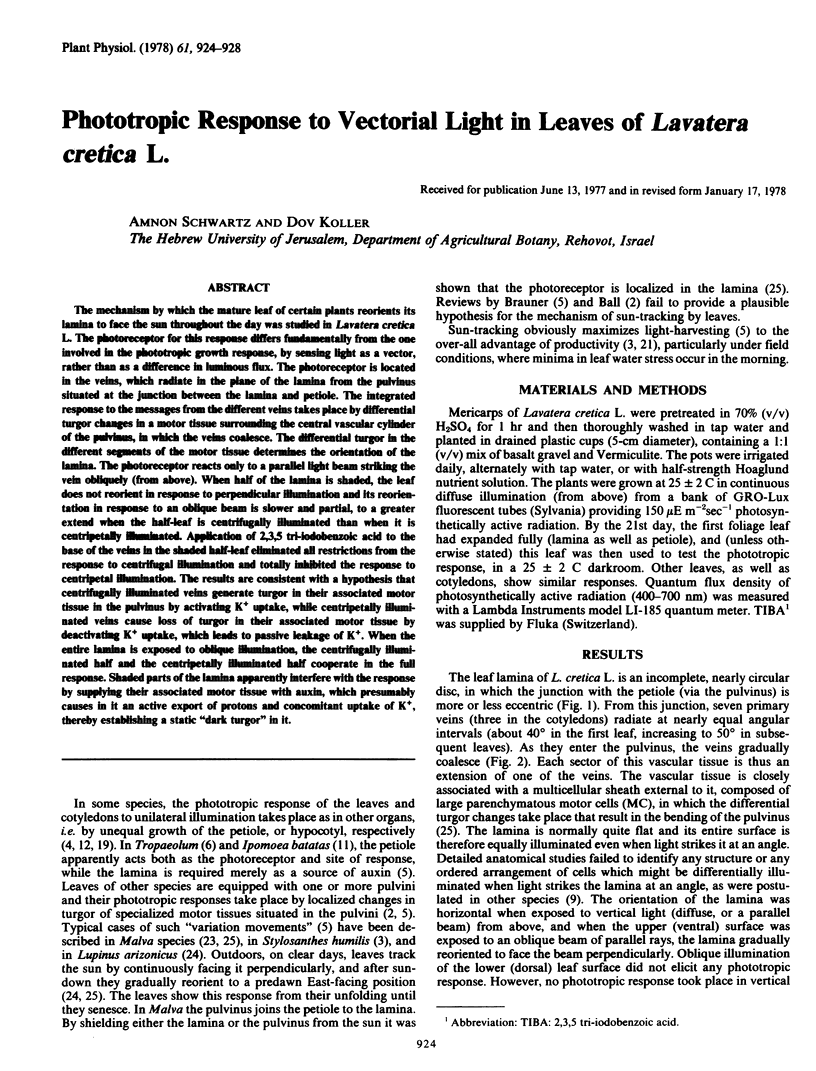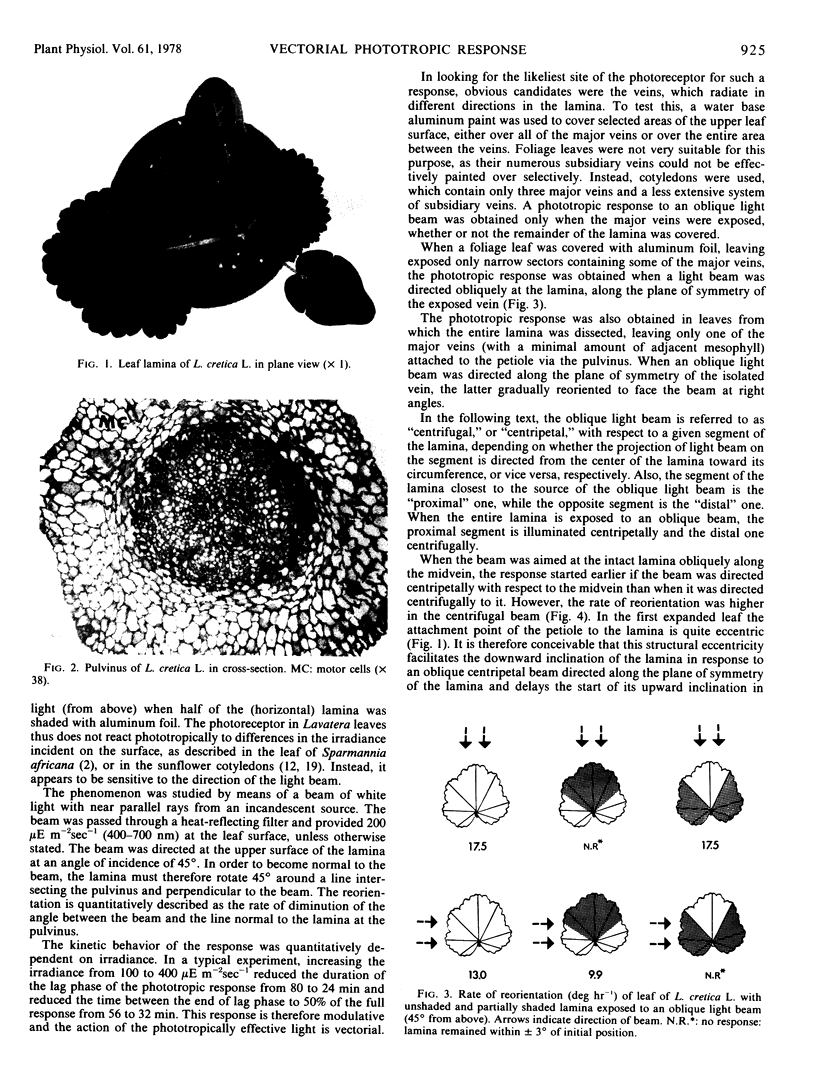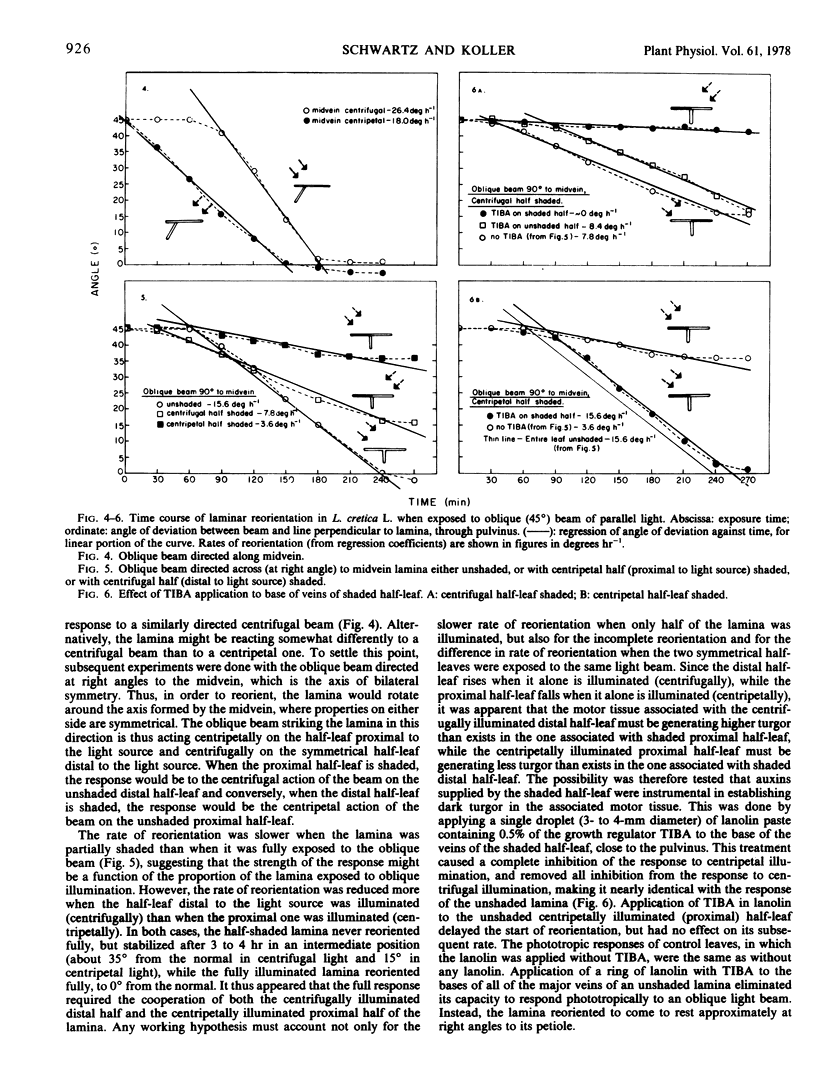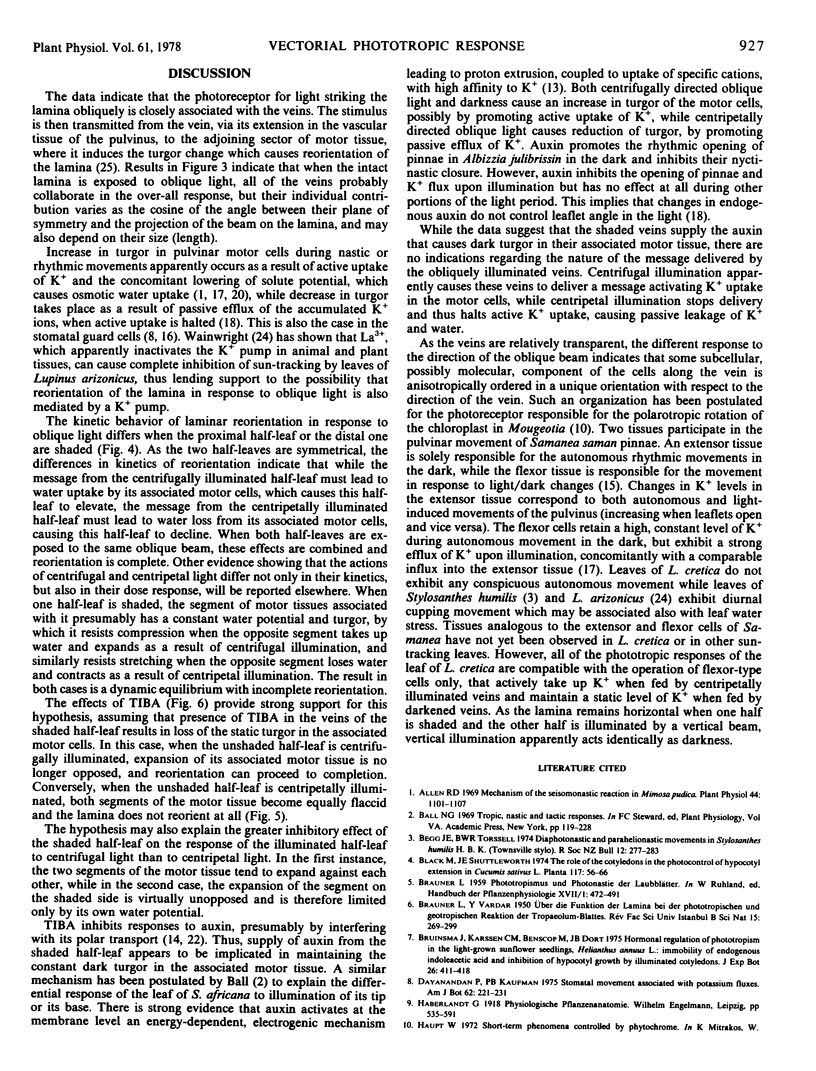Abstract
The mechanism by which the mature leaf of certain plants reorients its lamina to face the sun throughout the day was studied in Lavatera cretica L. The photoreceptor for this response differs fundamentally from the one involved in the phototropic growth response, by sensing light as a vector, rather than as a difference in luminous flux. The photoreceptor is located in the veins, which radiate in the plane of the lamina from the pulvinus situated at the junction between the lamina and petiole. The integrated response to the messages from the different veins takes place by differential turgor changes in a motor tissue surrounding the central vascular cylinder of the pulvinus, in which the veins coalesce. The differential turgor in the different segments of the motor tissue determines the orientation of the lamina. The photoreceptor reacts only to a parallel light beam striking the vein obliquely (from above). When half of the lamina is shaded, the leaf does not reorient in response to perpendicular illumination and its reorientation in response to an oblique beam is slower and partial, to a greater extend when the half-leaf is centrifugally illuminated than when it is centripetally illuminated. Application of 2,3,5 tri-iodobenzoic acid to the base of the veins in the shaded half-leaf eliminated all restrictions from the response to centrifugal illumination and totally inhibited the response to centripetal illumination. The results are consistent with a hypothesis that centrifugally illuminated veins generate turgor in their associated motor tissue in the pulvinus by activating K+ uptake, while centripetally illuminated veins cause loss of turgor in their associated motor tissue by deactivating K+ uptake, which leads to passive leakage of K+. When the entire lamina is exposed to oblique illumination, the centrifugally illuminated half and the centripetally illuminated half cooperate in the full response. Shaded parts of the lamina apparently interfere with the response by supplying their associated motor tissue with auxin, which presumably causes in it an active export of protons and concomitant uptake of K+, thereby establishing a static “dark turgor” in it.
Full text
PDF




Images in this article
Selected References
These references are in PubMed. This may not be the complete list of references from this article.
- Allen R. D. Mechanism of the Seismonastic Reaction in Mimosa pudica. Plant Physiol. 1969 Aug;44(8):1101–1107. doi: 10.1104/pp.44.8.1101. [DOI] [PMC free article] [PubMed] [Google Scholar]
- Lam S. L., Leopold A. C. Role of leaves in phototropism. Plant Physiol. 1966 May;41(5):847–851. doi: 10.1104/pp.41.5.847. [DOI] [PMC free article] [PubMed] [Google Scholar]
- Satter R. L., Geballe G. T., Applewhite P. B., Galston A. W. Potassium flux and leaf movement in Samanea saman. I. Rhythmic movement. J Gen Physiol. 1974 Oct;64(4):413–430. doi: 10.1085/jgp.64.4.413. [DOI] [PMC free article] [PubMed] [Google Scholar]
- Satter R. L., Marinoff P., Galston A. W. Phytochrome-controlled Nyctinasty in Albizzia julibrissin: IV. Auxin Effects on Leaflet Movement and K Flux. Plant Physiol. 1972 Aug;50(2):235–241. doi: 10.1104/pp.50.2.235. [DOI] [PMC free article] [PubMed] [Google Scholar]




